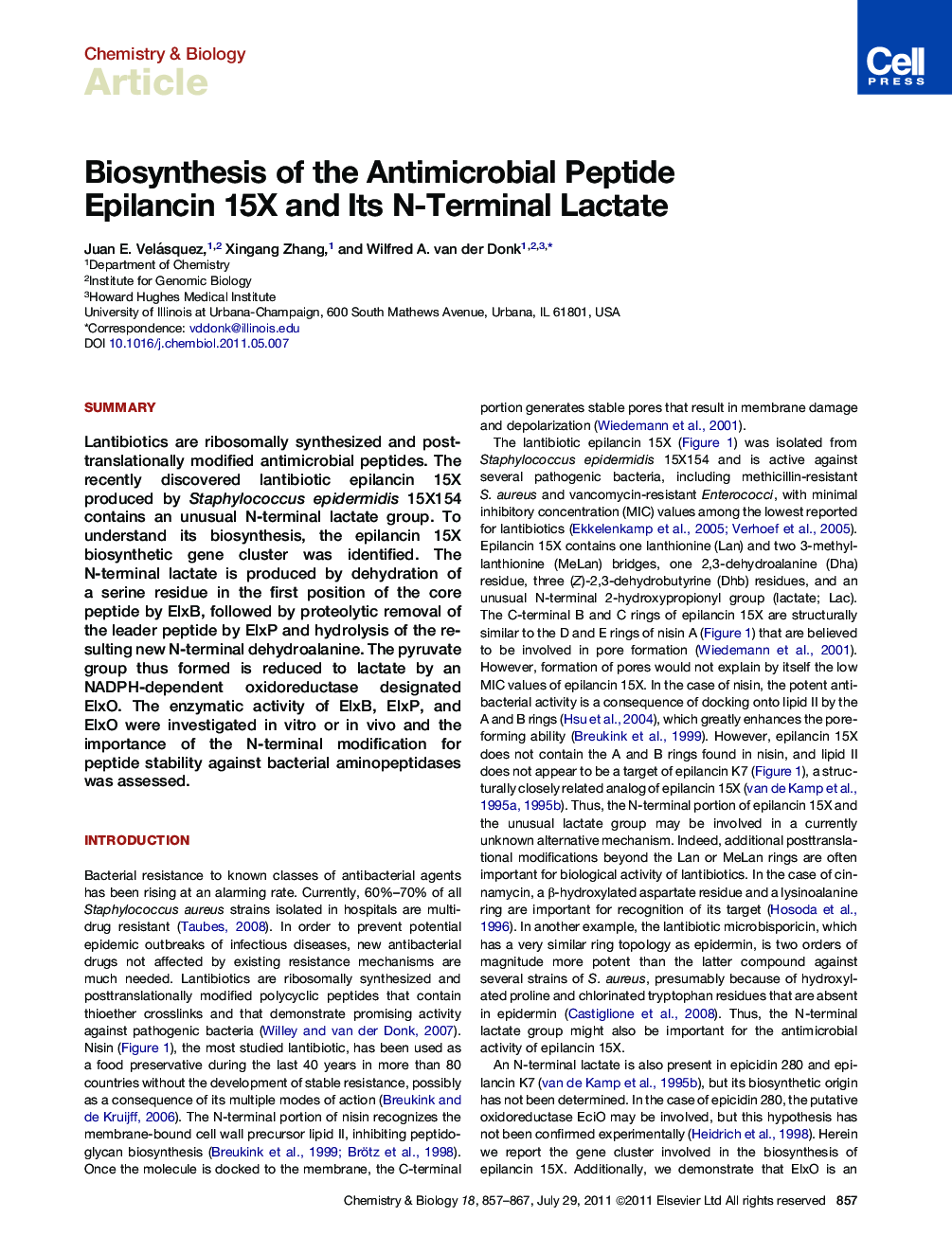| Article ID | Journal | Published Year | Pages | File Type |
|---|---|---|---|---|
| 1391937 | Chemistry & Biology | 2011 | 11 Pages |
SummaryLantibiotics are ribosomally synthesized and posttranslationally modified antimicrobial peptides. The recently discovered lantibiotic epilancin 15X produced by Staphylococcus epidermidis 15X154 contains an unusual N-terminal lactate group. To understand its biosynthesis, the epilancin 15X biosynthetic gene cluster was identified. The N-terminal lactate is produced by dehydration of a serine residue in the first position of the core peptide by ElxB, followed by proteolytic removal of the leader peptide by ElxP and hydrolysis of the resulting new N-terminal dehydroalanine. The pyruvate group thus formed is reduced to lactate by an NADPH-dependent oxidoreductase designated ElxO. The enzymatic activity of ElxB, ElxP, and ElxO were investigated in vitro or in vivo and the importance of the N-terminal modification for peptide stability against bacterial aminopeptidases was assessed.
► The gene cluster and biosynthetic pathway of epilancin 15X were identified ► The alcohol dehydrogenase ElxO catalyzes formation of the N-terminal d-lactate ► In vitro ElxP cleaves the leader region from an unmodified precursor peptide ► The N-terminal lactate group confers proteolytic stability against aminopeptidases
